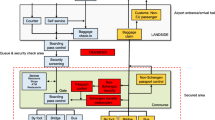Abstract
A total of 34 deployed driver and passenger airbags from altogether 20 vehicles after frontal collisions were investigated. In 80% of the airbags possible biological traces could be located with an alternative light source (ALS, Polilight) at a wavelength of 450–470 nm. These traces were swabbed, a part of them additionally cut and subjected to DNA analysis, which led to comparable SGMplus profiles in about 60%. In the 20% of the airbags on which no possible biological traces could be located, the whole surfaces were swabbed. In these cases subsequent DNA profiling mostly led to non-interpretable results. For the evaluation and interpretation of the data, buccal swab samples provided by drivers and co-drivers were analysed. The results and conclusions from DNA analyses and the declarations from the involved passengers were always concordant. Thus, molecular biological analysis of deployed airbags can help to determine the occupants positions within a vehicle (driver or passenger status) at the time of impact.



Similar content being viewed by others
References
Sato Y, Ohshima T, Kondo T (2002) Air bag injuries—a literature review in consideration of demands in forensic autopsies. Forensic Sci Int 128:162–167
Cooper JT, Balding LE, Jordan FB (1998) Airbag mediated death of a two-year-old child wearing a shoulder/lap belt. J Forensic Sci 43:1077–1081
Jumbelic MI (1995) Fatal injuries in a minor traffic collision. J Forensic Sci 40:492–494
Mbamalu D, Banerjee A, Shankar A, Grant D (2000) Air bag associated fatal intra-abdominal injury. Injury 31:121–122
Parson W, Pegoraro K, Niederstatter H, Foger M, Steinlechner M (2000) Species identification by means of the cytochrome b gene. Int J Legal Med 114:23–28
Lynnerup N, Hjalgrim H, Eriksen B (1995) Routine use of ultraviolet light in medicolegal examinations to evaluate stains and skin trauma. Med Sci Law 35:165–168
Springer E, Almog J, Frank A, Ziv Z, Bergman P, Qiang WG (1994) Detection of dry body fluids by inherent short wavelength UV luminescence: preliminary results. Forensic Sci Int 66:89–94
Stoilovic M (1991) Detection of semen and blood stains using polilight as a light source. Forensic Sci Int 51:289–296
Rutty GN, Hopwood A, Tucker V (2003) The effectiveness of protective clothing in the reduction of potential DNA contamination of the scene of crime. Int J Legal Med 117:170–174
Rutty GN (2002) An investigation into the transference and survivability of human DNA following simulated manual strangulation with consideration of the problem of third party contamination. Int J Legal Med 116:170–173
Acknowledgements
The authors would like to thank Ms Petra Zürcher for her valuable laboratory work. The authors also would like to thank Roger Teissl, Crime Scene Officer, Department of Crime, Gendarmerie Tyrol, Austria for his excellent technical assistance as well the department in general for their help in collecting the samples.
Author information
Authors and Affiliations
Corresponding author
Rights and permissions
About this article
Cite this article
Grubwieser, P., Pavlic, M., Günther, M. et al. Airbag contact in traffic accidents: DNA detection to determine the driver identity. Int J Legal Med 118, 9–13 (2004). https://doi.org/10.1007/s00414-003-0406-3
Received:
Accepted:
Published:
Issue Date:
DOI: https://doi.org/10.1007/s00414-003-0406-3




